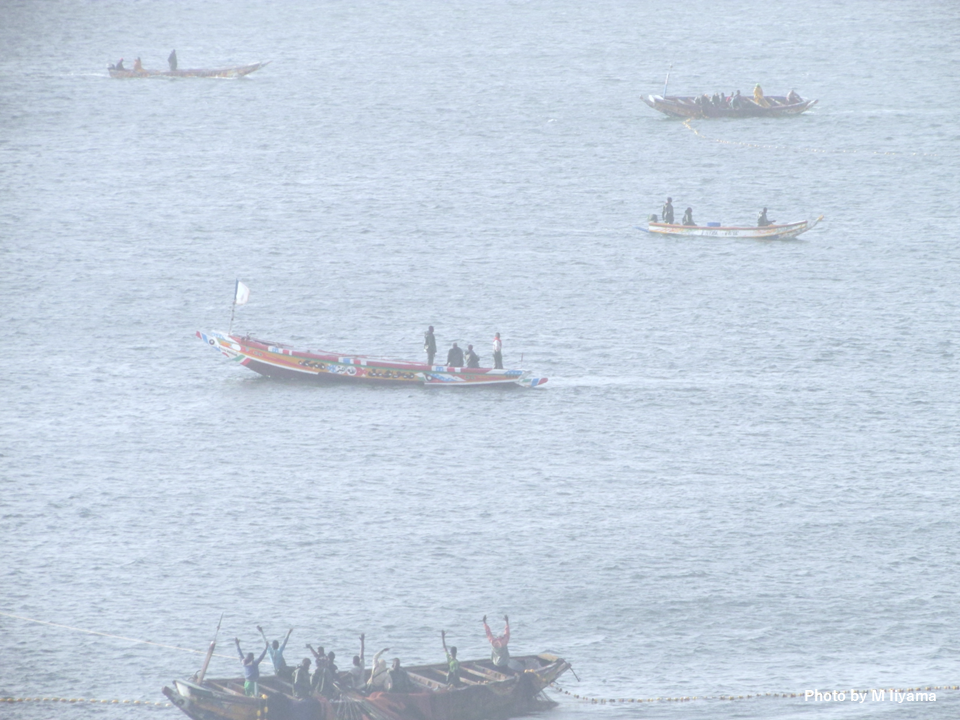Pick Up
1277. Current Status of Global Marine Fisheries Resources

1277. Current Status of Global Marine Fisheries Resources
Maintaining the long-term prosperity and sustainability of marine fisheries is not only ecologically important, but also socially, economically, and politically important. A new UN report, presented at the Third UN Ocean Conference (UNOC3) in Nice last week, highlights that 35% of the world's fish stocks are currently unsustainably harvested, while effective management can support the recovery and long-term sustainable prosperity of fisheries.
Since the early 1970s, the Food and Agriculture Organization of the United Nations (FAO) has recognized the importance of assessing the biological sustainability and long-term production potential of marine fisheries and has provided regular updates on the status of marine fisheries resources as part of FAO's State of the World Fisheries and Aquaculture report.
In this analysis, 2,570 disaggregated stocks were assessed, compared to approximately 450 aggregated stocks used in previous assessments. With expanded coverage, higher resolution data, and a new hierarchical approach, this analysis will help local communities better understand the status of fisheries resources, inform global policy dialogue, facilitate discussions on fisheries strategies and the sustainable use of marine living resources, and provide information to support Sustainable Development Goal (SDG) indicator 14.4.1 (the indicator that measures the proportion of fish stocks that are fished at biologically sustainable levels).
According to the report, the proportion of marine stocks that are fished at biologically sustainable levels was estimated to be 64.5% in the base year (2021), with 35.5% classified as overfished. The proportion of overfished stocks has continued to increase at a rate of about 1% per year in recent years, highlighting the urgent need to strengthen effective management.
On the other hand, when comparing production volumes, it was estimated that about 77.2% of fishery landings in the base year (2021) were from biologically sustainable stocks. This highlights that stocks with higher landings on average tend to be managed in a more sustainable manner, and that effective management supports the recovery and long-term sustainability of fishery resources.
While acknowledging uncertainties, the report revealed broad patterns by region and major fish species.
Regional patterns
- In areas with strong management systems, such as the Northeast Pacific and Southwest Pacific, sustainability (92.7% and 85.5%, respectively) is higher than in other areas.
- The semi-enclosed Mediterranean and Black Seas, and the South-East Pacific continue to face challenges, and despite significant progress in recent years, only about 35.1% and 46.4% of their fish stocks, respectively, are considered to be sustainably exploited.
- In the Eastern Indian Ocean, about 72.7% of stocks are estimated to be sustainably exploited. However, data are unavailable for some vulnerable species, which may not be included in the stock list.
- In the Eastern Central Atlantic, 33.3% of fish stocks were assessed as underfished as a result of management efforts, including efforts to reduce bycatch. However, these underfished stocks account for only 5.9% of the total landings in the area, making little impact on the sustainability of the region's fisheries landings.
Highlights of key species
- Among the top 10 species by declared catch (anchovy, pollock, skipjack, tuna, mackerel, herring, yellowfin tuna, sardine, European sardine, black whiting, and Atlantic cod), 60.0% of stocks were considered biologically sustainable. This partly reflects the number of overfished cod stocks, but 85.8% of landings were estimated to come from biologically sustainable stocks.
- The situation for tuna and tuna-like species shows the effectiveness of strong management measures, with 87.0% of stocks considered sustainable in 2021 and 99.3% of landings coming from biologically sustainable stocks. This is due in particular to fishing countries implementing effective management plans through their regional fisheries management organizations.
(Reference)
Sharma, R., Barange, M., Agostini, V., Barros, P., Gutierrez, N.L., Vasconcellos, M., Fernandez Reguera, D., Tiffay, C., & Levontin, P., eds. 2025. Review of the state of world marine fishery resources – 2025. FAO Fisheries and Aquaculture Technical Paper, No. 721. Rome. FAO. https://doi.org/10.4060/cd5538en
Contributor: IIYAMA Miyuki, Information Program
